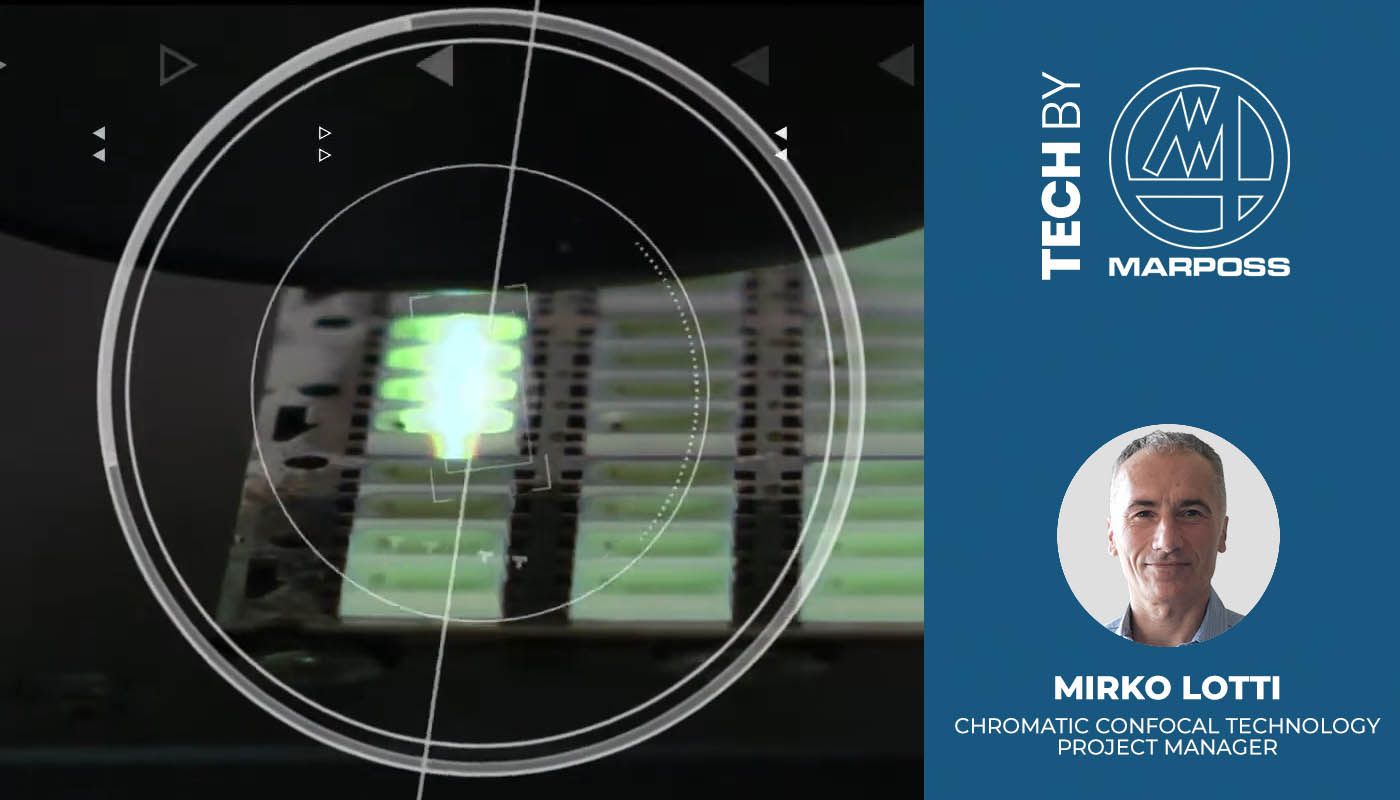
Over the past decade, we have witnessed a technological evolution in the world of industry and consumption, with an increasing impact on production processes. The challenge of improving the quality of products and services and reducing time to market has required increasingly efficient and effective measurement solutions.
The use of delicate materials and the increasing need for flexibility in quality control have led to a growing use of non-contact measurement technologies over traditional contact instruments. Marposs has seized this opportunity by providing non-contact measurement solutions based on chromatic confocal technology.
Chromatic confocal technology exploits the principle that through appropriate optical design techniques, white light is broken down into its constituent wavelengths: colors from blue to red that, when properly sized, produce a range of sensors and controllers with excellent metrological performances.
Marposs offers accurate solutions down to the nanometer level for measuring distance, roughness, profiles, 3D reconstructions, and image analysis for defect control. Confocal probes could also be implemented to measure the thickness of single and multilayer transparent materials such as glass and plastic.
The shift from endothermic to electric motors has required more accurate controls in the production processes of batteries and transmissions. Vehicle characteristics such as energy consumption, vibration, and noise are increasingly critical in the new generation of mobility.
Anodes and cathodes for vehicles’ batteries are manufactured to very tight tolerances to allow for proper assembly. All drive train parts require surface finishes with extremely low roughness values to minimize friction for the benefit of battery efficiency. The continuous search for vehicle efficiency has also pushed the body design towards increasingly complex shapes with increased use of glass for the benefit of aerodynamics, aesthetics, interior comfort, and driving pleasure. The shape of the windshield is essential for a correct assembly, and the flatness of the HUD areas, to have perfect image projections.
In general, we are witnessing an increasing integration of non-contact technologies and automation to contribute more and more to the quality of the products that surround us.
The confocal measurement technology is insensitive to ambient light and, therefore, able to operate in the working environment on any surface, as well as being immune to EMC noise. One of the possible problems of non-contact measurement can be the complex shapes of the measured part, however our probe design and our wide range of products are able to measure very inclined profiles and/or steps (such as the profiles of components on electronic boards).
The non-contact chromatic confocal measurement is also extremely versatile. Since there is no contact with the part, all the steps required with a contact measurement device to minimize interference with the part during dynamic measurement are completely eliminated.
No pneumatic system is needed to control the load of the contact point, so it is a greener technology that reduces emissions to the environment. The part can be measured in-line, in motion, benefiting the production cycle, layout and cost control.
It appears evident how non-contact measurement will be a defining feature of future quality control. We believe that confocal technology’s intrinsic characteristics and features perfectly balance high precision and accuracy with ease of integration with both automation and existing quality control technologies.